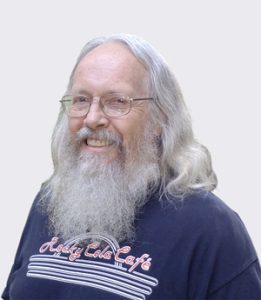Mill Fire of 1975 – The Fire First Touches La Crescenta
Last week we heard about how the Mill Fire started high up in the Angeles Forest on Saturday, Nov. 22. On Sunday, pushed by Santa Ana winds, it burned through Big Tujunga Canyon. By Sunday afternoon it was climbing the backside of Mt. Lukens.

president of the Historical Society
of the Crescenta Valley and loves local history. Reach him at
lawlerdad@yahoo.com.
Down in the Crescenta Valley, the effects of the fire were getting very real that Sunday afternoon. At 3 p.m. dense smoke covered the sun. Drivers on Foothill Boulevard turned on their headlights to see. At 5 p.m. darkness fell, and the entire range of the San Gabriels, from La Cañada to Tujunga, was silhouetted by a bright orange glow. At 6 p.m. a sheriff’s department communications station that had been installed on the top of Mt. Lukens signed off and pulled back from the Crest and at 6:30 p.m. the first visible flames appeared at the peak of the mountain. The winds were blowing from 20 to 40 mph.
A Red Cross evacuation station had been set up in the gym at Crescenta Valley High School with cots for evacuated families and meals for those who were out of their homes. Oak Grove Park (now Hahamongna Watershed Park) in La Cañada was established as a rehabilitation station for the thousands of firefighters who were working the fire. There they could sleep and get food between shifts.
Over on the Tujunga side, on Sunday afternoon the fire had completed its journey down Big Tujunga Canyon and was now on the edges of Seven Hills and Alpine Village. Sunday had seen a helicopter assault on the fires in the Tujunga area. Helicopters were being filled with the fire repellent Phos-Chek and taking off from three hurriedly established bases – one at JPL, another on the still unopened 2 Freeway, and another in the Lucky’s parking lot on Foothill at the border of CV and Tujunga (today’s Albertsons Market). Phos-Chek drops were keeping the fire at bay along the edges of the Tujunga neighborhoods close to Big Tujunga, and LA City firefighters had arranged themselves through those neighborhoods. The fire line moved east along the face of the mountains above Tujunga as one-by-one the small canyons, Zachau, Haines and Blanchard, were evacuated.
By 9 p.m., the fire was headed toward La Crescenta from Tujunga while at the same time it crept down Mt. Lukens. At Boston Avenue and Markridge Road, the Glendale Fire Dept. made a stand with firefighters lining Boston facing down the flames advancing from Tujunga. They poured water into the gap formed by the brush-covered Cook Canyon debris basin. They employed the GPD’s unusual snorkel truck, fashioned somewhat like a giant cherry-picker, with a hose nozzle atop a long articulated arm. They were able to stop the flames on that front. But just a few hundred yards to their rear, flames were creeping closer to the Inter Valley Ranch, what is today Deukmejian Wilderness Park. A couple of hours earlier all the horses had been evacuated from the big stone barn where they were stabled and taken to Camp Max Strauss in the Verdugo Mountains.
Glendale Fire Dept. had two full companies on the ranch property, one protecting the stone barn and the other on the Plouffe home (the house that is today the headquarters for the Trails and Open Space programs). The winds were still relatively mild and they were able to save both structures.
Now the fire was threatening the homes across Markridge from the ranch, and from Boston all the way to New York Avenue. Thirty to 40 mph winds were carrying embers across Markridge and into the first two blocks of the Glendale annex. The area was not issued mandatory evacuations, so many residents were on their rooftops with garden hoses. Pine trees on the north side of Markridge caught fire. At 3 a.m. the winds began to slacken and the danger for this area seemed to have passed.
Firefighters followed the fire line as it traveled east toward Pinecrest. It seemed as though the fire, now retreating a little higher on the hillside, could be beaten. No one knew that the worst was yet to come.
Next week, the wind returns.
